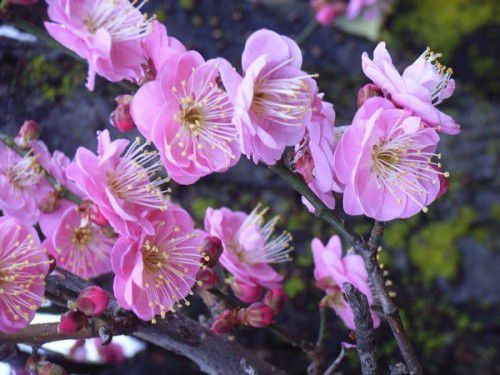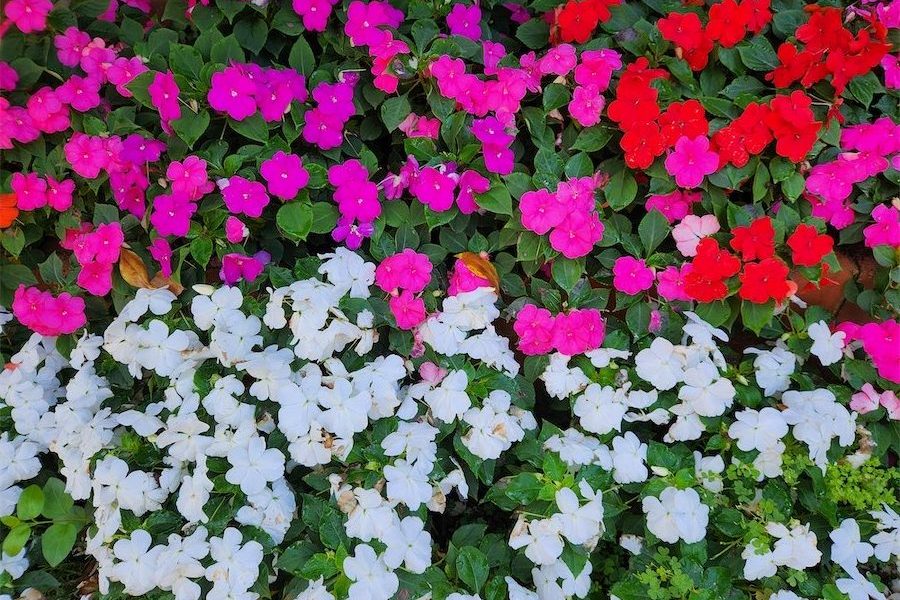HELLEBORES brighten up the winter garden. Interestingly, the colourful parts of the plant are sepals rather than petals.

Here are some of the most popular varieties for the home garden:
Helleborus argutifolius is a native of Corsica. With its leathery, dark, evergreen foliage it can grow to about half a metre high. The distinctive green, cup-shaped flowers appear from June to early September and will thrive in full sun in well-drained soil. They are a very forgiving even if the soil is not the best. The flowers are useful as a cut flower and will last a long time.
Helleborus foetidus has the unfortunate common name of “stinking helleborus” as the Latin name suggests. This is a rare British native, although still available here. It forms a broad, evergreen mound 75cm high by up to a metre across.
The deeply divided leaves smell unpleasant when crushed, although the idea is to enjoy the flowers and not go about crushing the leaves. The green flowers are nearly cylindrical with a purplish margin on the tips. This grows best with plenty of organic material such as rotted leaves in a dappled shady position.
Possibly one of the most popular is Helleborus niger, which is not black as the Latin name would suggest. It is also known as the “Winter Rose” in Australia and the “Christmas Rose” in Britain and Europe. It is also popular as a florist’s flower.
It is no relation to roses, except the flowers resemble old-fashioned heritage rose flowers. The blooms appear in early winter for a long flowering period often into early summer. The most common blooms are white with a green eye and up to 7.5mm across appearing above the deeply divided leaves. Once again it loves a humus rich soil in dappled shade.
The common species H. orientalis is the variety mostly seen in gardens with its purple flowers growing to about 50cm high.
This has been a useful plant for hybridising in the forms of H. orientalis x hybridus. Flower colours in the hybrid varieties are available in a wide range of colours from deep pink to rich purple with blooms often spotted and can include semi-double and double flowers.
They will often self-seed in abundance and can easily be transplanted after flowering in early autumn. This will enable the roots to become established before winter. All Hellebores can make a magnificent site planted en masse under deciduous trees, which allow the sun in winter to promote flowering. An ideal companion plant is Heuchera with accompanying leaf colour to match the hybrid hellebores.

Both are ideal for the average size garden and would look spectacular in a group of three, if you have the space.
If you want to follow on with an early spring flowering blossom tree, the flowering almond, Prunus dulcis “Purpurea” has striking double reddish-purple blossoms followed by dark purple leaves in summer. These and other blossom trees will be arriving at your local garden centre in the coming weeks. Possibly the young flowering apricots may be showing a few flowers.
Things to do
- Check stored tubers of dahlias and cannas for rot.
- Another reminder to disconnect plastic tap timers to prevent frost damage and remember to disconnect garden hoses at night.
- Check indoor plants. Are the too close to air-conditioning or heaters? Is the saucer full of water? Fill the saucer with coloured pebbles and sit the pot on the pebbles to prevent root rot.
Canberra garden in China
CANBERRA landscape architect Neil Hobbs will be describing what it took to develop “The Garden of the Southern Cross” – the only Australian garden included in the World Landscape Art Exposition in China – at the National Museum of Australia, 5.30pm-7.30pm, on Thursday, June 20.
Harris Hobbs Landscapes was one of only 20 landscape architect firms from around the world to be asked to design a garden for this international event, which is taking place on a huge site (3km x 1km) in the new Jinzhou city, on the edge of the Bohai Sea, until October.
Tickets at $25, which include the talk, canapes and drinks, can be booked at opengarden.org.au or by calling 0458 700079.
Who can be trusted?
In a world of spin and confusion, there’s never been a more important time to support independent journalism in Canberra.
If you trust our work online and want to enforce the power of independent voices, I invite you to make a small contribution.
Every dollar of support is invested back into our journalism to help keep citynews.com.au strong and free.
Thank you,
Ian Meikle, editor




Leave a Reply